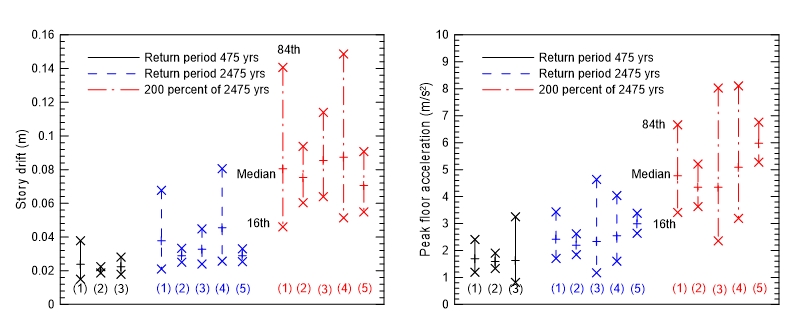Next generation performance-based earthquake engineering involves the use of a probability framework, which incorporates the inherent uncertainty and variability in seismic hazard, structural and non-structural responses, damage states and economic and casualty losses. One key issue in seismic performance assessment is the scaling of ground motions for nonlinear response-history analysis. In this paper, the impact of ground-motion scaling procedures, including 1) geometric-mean scaling of pairs of ground motions, 2) spectrum-matching of ground-motions, 3) first-mode-based scaling to a target spectral acceleration and 4) maximum-minimum orientation scaling, on the distributions of floor acceleration, story drift and floor spectral acceleration of a sample high-rise building is investigated using a series of nonlinear response-history analyses of a 34-story moment-resisting frame building.
In general, Methods 1 and 3 provide similar median values for both acceleration and drift responses. Method 2 moderately underestimates the median responses computed for Method 1. Method 3 can be inappropriate as it underestimates the medians and provides highest dispersions for floor acceleration. If prediction of damage to non-structural components is an objective of the analysis, an appropriate method is Method 5 which takes into account contributions from higher modes. (土木系黃尹男教授提供)
http://dx.doi.org/10.1016/j.soildyn.2017.01.013

|
(a) Peak story drift, 1st story
|
(b) Peak floor acceleration, 2nd floor
|
| |
|
|
Figure 1. Median, 84th and 16th percentile values of different response quantities of the sample building
|